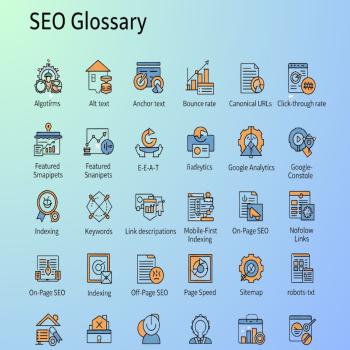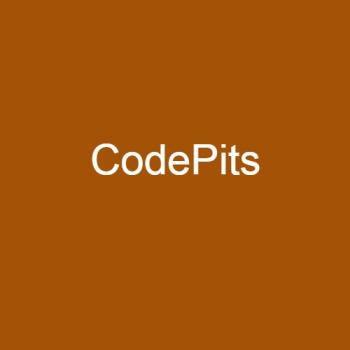
Posted on: 3 months ago
SEO Glossary: 50+ Must-Know Terms for Beginners
Google Ranking, Keyword Optimization, Link Building, Organic Traffic, Search Engine Optimization, SEO, SEO Definitions, SEO Glossary, SEO Guide, SEO Terms
77 | 0 | 1
Whether you're launching a blog, managing a business website, or diving into digital marketing, understanding SEO (Search Engine Optimization) is essential. SEO helps your website become more visible on search engines like Google, attracting organic (free) traffic. But let’s face it—SEO can feel like a new language when you're just starting.
To help you crack the code, we’ve compiled this beginner-friendly SEO glossary with 50+ essential terms you’ll likely encounter. Bookmark this page, and come back whenever you need a refresher!
A
1. Algorithm
A set of rules that search engines use to determine the ranking of web pages in search results. Google's algorithm is constantly evolving to provide more relevant results.
2. Alt Text (Alternative Text)
Text added to image tags to describe an image's content. Helps search engines understand images and improves accessibility.
3. Anchor Text
The clickable text in a hyperlink. Search engines use anchor text to determine the topic of the linked page.
4. Authority
A measure of a website’s trustworthiness and credibility. High-authority sites tend to rank better in search engines.
B
5. Backlink
A link from one website to another. High-quality backlinks are crucial for SEO and signal authority to search engines.
6. Bounce Rate
The percentage of visitors who leave a website after viewing only one page. A high bounce rate can indicate a poor user experience.
7. Black Hat SEO
Unethical SEO practices that violate search engine guidelines (e.g., keyword stuffing, cloaking). Can lead to penalties.
8. Blog
A regularly updated website or web page, typically run by an individual or group, used to publish content that can be optimized for SEO.
C
9. Canonical URL
Used to tell search engines the preferred version of a web page when multiple versions exist. Helps prevent duplicate content issues.
10. Click-Through Rate (CTR)
The percentage of users who click on a specific link out of the total who see it. A high CTR often indicates effective SEO titles and descriptions.
11. Conversion Rate
The percentage of website visitors who complete a desired action (e.g., signing up, buying something). SEO isn’t just about traffic—it’s about conversions too.
12. Content Marketing
Creating valuable content to attract and retain visitors. Integral to modern SEO.
13. Crawling
The process where search engine bots discover new and updated content by following links.
D
14. DA (Domain Authority)
A metric developed by Moz that predicts how well a website will rank. It ranges from 1 to 100.
15. Duplicate Content
Content that appears in more than one place online. It can hurt SEO rankings.
16. Dofollow Link
A link that passes SEO value or "link juice" to the target site.
17. Disavow Tool
A Google Search Console feature used to ask Google not to consider certain backlinks when assessing your site.
E
18. E-E-A-T
Stands for Experience, Expertise, Authoritativeness, and Trustworthiness—key quality criteria used by Google.
19. External Link
A hyperlink that points to a page on a different domain.
20. Engagement
User interaction metrics like time on site, pages per visit, and comments can influence rankings indirectly.
F
21. Featured Snippet
A highlighted search result that appears above the organic results (position 0). Often used to answer questions directly.
22. Freshness
The timeliness of content. Google often prefers newer or updated pages for time-sensitive searches.
G
23. Google Analytics
A free tool that tracks and reports website traffic. Essential for measuring SEO success.
24. Google Search Console
A free tool from Google to monitor site performance, fix indexing issues, and see which keywords bring traffic.
25. Grey Hat SEO
SEO techniques that are not clearly defined as ethical or unethical. Riskier than white hat but less risky than black hat.
H
26. Heading Tags (H1–H6)
HTML elements are used to define headings. H1 is the most important and should contain your main keyword.
27. HTML (HyperText Markup Language)
The code is used to create web pages. SEO-friendly HTML helps search engines better understand your site.
I
28. Indexing
Once content is crawled, it's added to a search engine’s index (its database). Indexed pages can show up in search results.
29. Internal Link
A hyperlink that connects one page of your website to another. Helps distribute page authority and improves navigation.
30. Impression
The number of times your page or link appears in search results.
K
31. Keyword
Words or phrases users type into search engines. The core of any SEO strategy.
32. Keyword Density
How often a keyword appears on a page compared to the total word count. Too high may lead to penalties.
33. Keyword Stuffing
Overusing keywords unnaturally. Bad for both SEO and user experience.
L
34. Landing Page
A standalone page designed for a specific purpose (like conversions). SEO landing pages target specific keywords.
35. Link Building
The process of acquiring backlinks. One of the most important aspects of off-page SEO.
36. Long-Tail Keyword
A longer, more specific keyword phrase (e.g., “best vegan restaurants in NYC”). Easier to rank for.
M
37. Meta Description
A summary of a page's content is shown in search results. Not a ranking factor, but it affects CTR.
38. Mobile-First Indexing
Google prioritizes the mobile version of your site for indexing and ranking.
39. Manual Action
A penalty issued by Google when a site violates its quality guidelines.
N
40. Nofollow Link
A hyperlink with a tag that tells search engines not to follow or pass link juice.
41. Negative SEO
Malicious practices aimed at harming a competitor's rankings (e.g., toxic backlink spamming).
O
42. Organic Traffic
Visitors who come to your site through unpaid search results.
43. On-Page SEO
Optimizing content and HTML elements on your web pages (titles, meta tags, internal links, etc.).
44. Off-Page SEO
SEO efforts are made outside of your website, mainly link building and brand mentions.
P
45. Page Speed
How fast does your web page load? A crucial ranking factor and UX element.
46. PPC (Pay-Per-Click)
A paid advertising model (e.g., Google Ads). Not SEO, but often used in tandem.
47. Position
The ranking of your page in the search engine results. Position 1 is the top result.
R
48. Robots.txt
A file that tells search engines which pages or files they can or can’t crawl on your site.
49. Ranking Factor
Criteria used by search engines to decide how pages rank (e.g., backlinks, content quality, page speed).
S
50. Sitemap
A file that lists all your website pages. Helps search engines crawl and index your content more effectively.
51. SERP (Search Engine Results Page)
The page you see after entering a query in a search engine. SEO aims to get your pages on top of the SERP.
52. SEO Audit
A detailed analysis of a website's SEO health to identify issues and improvement opportunities.
T
53. Title Tag
The clickable title is shown in search results. One of the most important on-page SEO elements.
54. Thin Content
Pages with little or no value to the user. It can hurt your SEO.
U
55. URL (Uniform Resource Locator)
The address of a web page. SEO-friendly URLs are short and include keywords.
56. User Experience (UX)
How easy and enjoyable it is for users to navigate your site. Affects engagement and indirectly SEO.
Wrapping Up
SEO is a vast field, but mastering the language is your first step toward optimizing effectively. This glossary of 50+ essential SEO terms should serve as your foundation. Whether you're managing a blog, an online store, or a business website, knowing this terminology will help you communicate better with marketers, developers, and search engines.
Ready to dive deeper? Begin applying these terms in your next SEO audit or content strategy, and watch your rankings rise!
Welcome to CodePits.
CodePits provide a collection of tutorials about many programming languages like PHP, Laravel Framework, Codeigniter Framework, Mysql Database, Bootstrap Front-end Framework, Jquery, Node JS, Ajax Example, APIs, CURL Example, Composer Packages Example, AngularJS, Ionic Framework, etc. 🙌
Other Posts
Categories
Tags
Comment
 PR
PR Home
Home Demos
Demos Near By
Near By
Comments (0)
🤔
No comments yet, be the first to help
load more